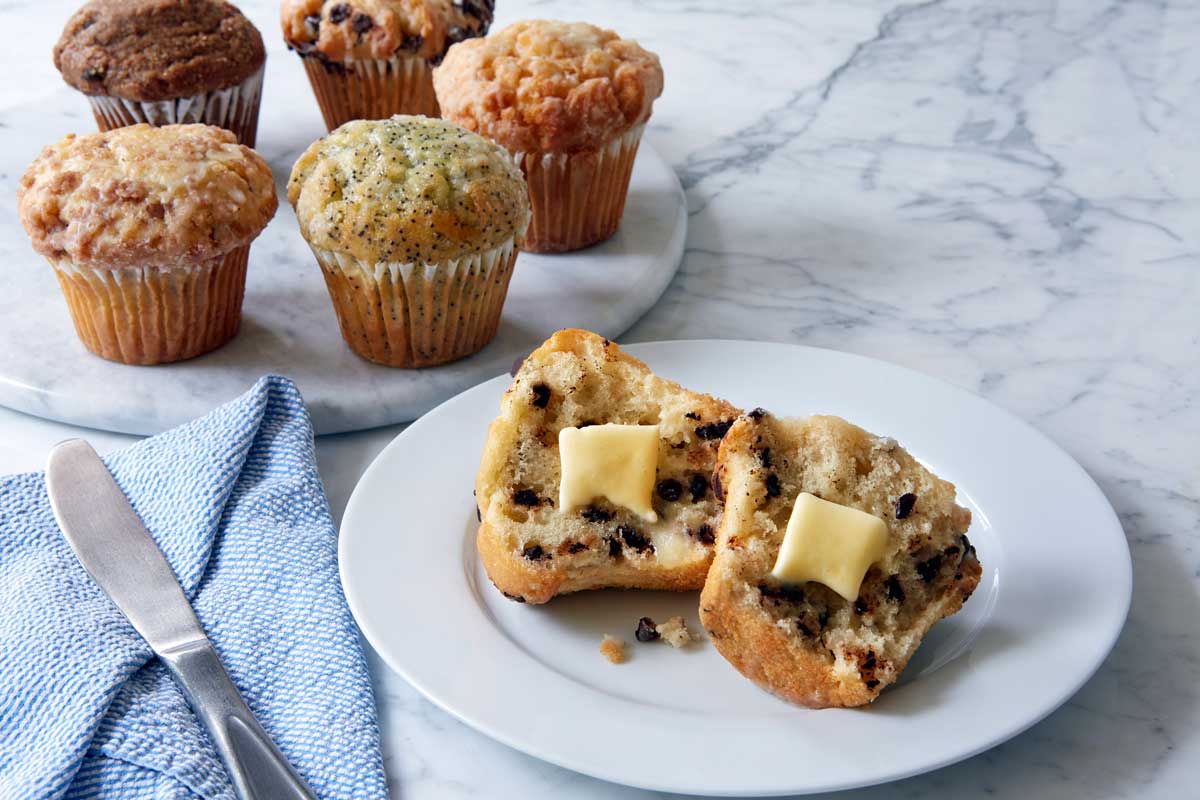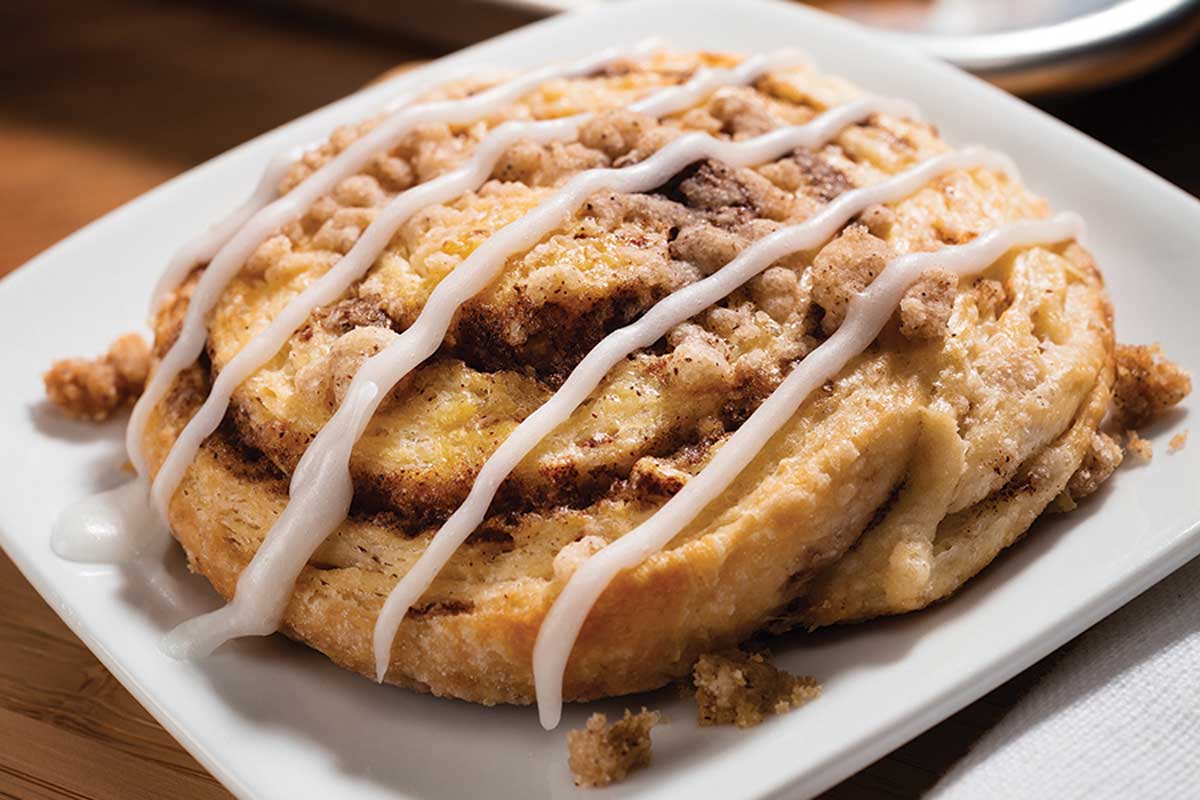In baking and frying, fat serves a wide range of functions. In a baked food formulation, it can provide structure, texture and flavor. In a frying situation, it does all those same things through a different medium. The way a croissant flakes, a cake crumbles or a donut tastes is all largely dependent on the fat used. These needs have not changed over the years. How formulators get there, however, has undergone quite an evolution.
“The biggest change to affect the baking industry over the past few years is the p.h.o.-free mandate made by the U.S. Food and Drug Administration,” said Roger Daniels, vice-president of research, development and innovation at Stratas Foods.
This mandate, passed down to the industry in June 2015 to remove partially hydrogenation oils (p.h.o.s), was a long time coming and took no one by surprise. The challenges it brought, however, were very real and required some adjustments.
“In our transition from p.h.o.s, we had real issues with melting characteristics, melting ranges and even oxidative stability,” said Frank Flider, consultant for Qualisoy. “Even though nutritionally p.h.o.s were a horrible thing, functionally they were fabulous, and they did a great job for the baker. All of that was lost, but we’ve been able to come back and deal with the deficiencies of the early substitutes through interesterification.”
Not only this technology but also new base oils made from high-oleic crops have changed the game when it comes to fats and oils. Now bakers have options that deliver the equivalent functionality and taste as p.h.o.s that the industry so relied on just a few years ago. That doesn’t mean there isn’t room for improvement though.

P.h.o.s were removed with the revelation that trans fats were much worse for human bodies than saturated fat, so moving from p.h.o.s to fats higher in saturates was a trade-off the industry had to make. With post-p.h.o. functionality and taste challenges solved, bakers are setting their sights on getting that same functionality and taste but with less saturates.
“Traditionally fats and oils were used for flavor, texture and mouthfeel, but in recent years, nutrition has become a key functionality from fats and oils,” said Chandra Ankolekar, Ph.D., technical sales manager, Kemin Food Technologies. “Reducing saturate fats has become a key priority for many global food companies.”
Other nutritional or healthy perceptions are on the table, too. Heart-healthy claims, omega 3 fatty acids and ingredients consumers recognize all have formulators turning to natural antioxidants and mold inhibitors as well as costlier base oils.
Leveraging the latest technology and oils available, bakers can find the solutions that check all the boxes as they move past basic functionality and taste to further meet consumer demands and processing needs.
A desirable label
With non-p.h.o. alternatives now on the market, bakers have turned their attention to options that provide a clean ingredient label or better nutritional profile.
“In the post-p.h.o. world, the new focus is on reducing saturated fats,” Mr. Daniels said. “Now that we’ve solved the non-p.h.o. baking issue, market demands for a shortening without hydrogenated fat on the label have increased. Products with lower saturated fats are the next big thing.”
Stratas Foods launched its Superb Select 1020 shortening to address this need. The soybean oil-based shortening offers reduced saturated fats in addition to no hydrogenation.
“The product lowers saturated fats by more than 40% versus conventional palm oil while maintaining the structure needed for baking and protecting both flavor and stability as it ages,” Mr. Daniels said.
All consumer trends point to an interest in the nutrition of food.
“What our market insights tell us is there continues to be a pull for enhanced nutritional profiles of fats and oils,” said John Satumba, R.&D. director of Cargill’s global edible oils business in North America. “The nutritional profiles of products in our Clear Valley product line, for example, represent a significant benefit to food manufacturers because of the focus on reduced saturated fat.”
But improved nutrition is only one piece of the labeling puzzles. Consumers are also looking at the ingredient list for unwanted ingredients and are interested in other ones they’ve deemed healthy.
The way a croissant flakes, a cake crumbles or a donut tastes is largely dependent on the fat used.
“In addition to improved functionality, many of our offerings feature on-trend attributes consumers are looking for,” said Mark Stavro, senior director of marketing, Bunge Loders Croklaan.
The company’s Pro-Formance soybean oil not only offers the functionality of high-oleic soy, for example, but it also delivers omega-3s, omega-6s and omega-9s to the finished product. The oil contains 12% saturates while also extending shelf life without the use of TBHQ. Bunge Loders Croklaan also recently introduced Non-GMO Project verified canola and soybean oils under its Whole Harvest brand to meet growing demand for those ingredients.
“Cleaning up the label is a big push and driver,” Mr. Satumba said. “One approach is the move from synthetic antioxidants to more natural alternatives. Cargill has deep ingredient expertise and a diverse portfolio of high stability oils and blends to accommodate those desires across a variety of food applications.”
To help bakers looking to improve their labels not only nutritionally but in a way that helps their products stand out, AAK provides both non-G.M.O. and organic solutions. For nutrition, the supplier has used sunflower and safflower oils to provide both improved nutrition and extended shelf life.
“With AAK’s extensive toolbox of customizable solutions, including high-oleic acid products, natural antioxidant stabilized systems, natural emulsifier blends, organic and non-G.M.O. options, there are few nutritional and clean label challenges that can’t be addressed,” said James Jones, Ph.D., vice-president, customer innovation, AAK USA Inc.
Despite the reprieve fat has gotten from consumers as they turn their attention to cutting back on sugar, reducing calories is still of interest; however, taste is more important than nutritional markers.
“Market research shows that most consumers are interested in healthier food as long as that food tastes great,” explained David Rowe, chief technology officer, Epogee Foods. “The new Nutrition Facts panel on food packages and the prominent display of calories in food service puts the spotlight on calories per serving to an unprecedented degree.”
In response, Epogee Foods has been working to reduce fat calories without impacting taste or other product characteristics. Epogee works like solid fat in a range of baking and snack applications with 92% fewer calories. It can replace 40% to 85% of fat in a formulation, and the company is currently working on pre-blended mixtures of Epogee and fat for bakers.
Cleaner stability
Whether a shortening or a frying oil, all fats experience oxidation, which results in rancidity. Delaying oxidation can keep finished baked foods looking and tasting great even after sitting on the shelf. High-stability frying oils deliver clean flavors and evenly fry for longer.
“On a performance level, p.h.o.s and shortenings historically provided a long fry life and good shelf stability at a cost-effective price point,” Mr. Stavro said.
That’s because there are two main strategies to combat oxidation: hydrogenation and the use of antioxidants. Hydrogenation reduces the degree of unsaturation in a fat, a key in how quickly a fat oxidizes. Taking partial hydrogenation off the table for formulators was a setback to maintaining that level of stability and shelf life. Fully hydrogenated oils, however, are still available for formulators to use in blends and interesterified solutions.

“The vast majority of these fry life and shelf stability needs can be met with our high-oleic options and blends, including high-oleic soybean oil and high performance, non-G.M.O. high-oleic sunflower oil,” Mr. Stavro continued.
The other component of extending shelf life is antioxidants. While synthetic antioxidants are effective at delaying oxidation, bakers are turning toward natural solutions as consumers demand cleaner ingredient lists.
“The industry has moved to higher value oils to incorporate healthier lipids in foods,” Dr. Ankolekar said. “Due to the unsaturated nature of these oils, they can be unstable, which can contribute to rancidity and unacceptable flavor. Stabilizing these healthier lipids and, therefore, achieving the target shelf life can be a challenge.”
To address that challenge, Kemin developed label-friendly ingredients that help control lipid oxidation and maintains the fresh taste of foods while managing the costs of scaling up with these pricier ingredients. Many of Kemin’s oxidative stability ingredients are plant-derived, making them helpful not only in delaying oxidation but also in improving label perception.
“Simplification and reduction of ingredients is one of the most resounding challenges across the industry,” said Jim Doucet, manager of emulsifier technology, Corbion. “When you start removing ingredients, it becomes difficult to maintain the same level of quality, tolerance, taste, texture and shelf life.”
While not without its challenges, formulators have found natural alternatives to the shelf-life problem. Corbion designed its Verdad MP 100 to help bakers maximize not only product quality but also extend freshness and mold inhibition while still meeting reformulation challenges. Verdad MP 100 also offers clean label mold inhibition.
“It features a combination of vinegar and natural flavors that delivers the functionality of calcium propionate with favorable flavor contributions, all while creating a cleaner ingredient label,” Mr. Doucet explained.
This article is an excerpt from the September 2019 issue of Baking & Snack. To read the entire feature on fats and oils, click here.




